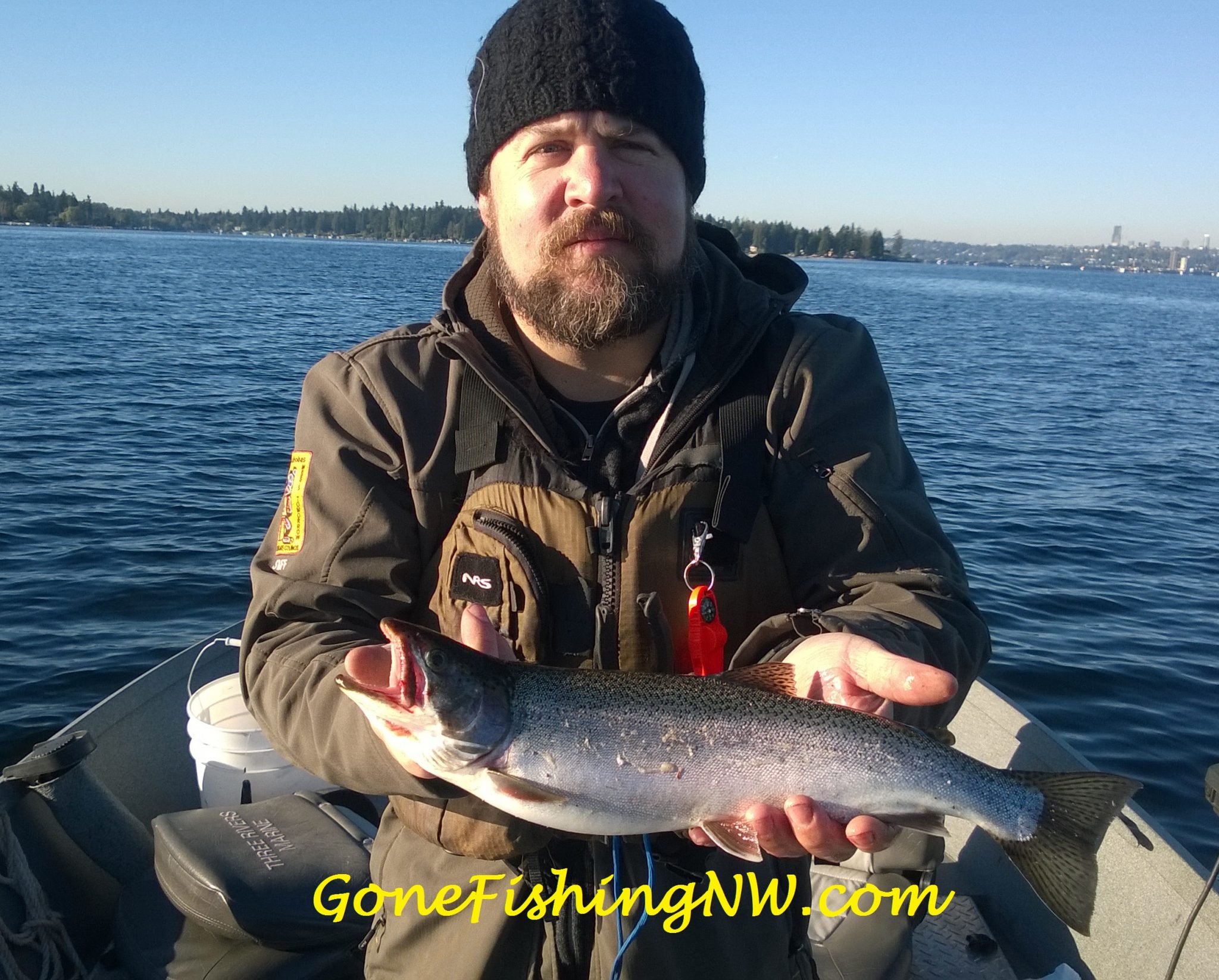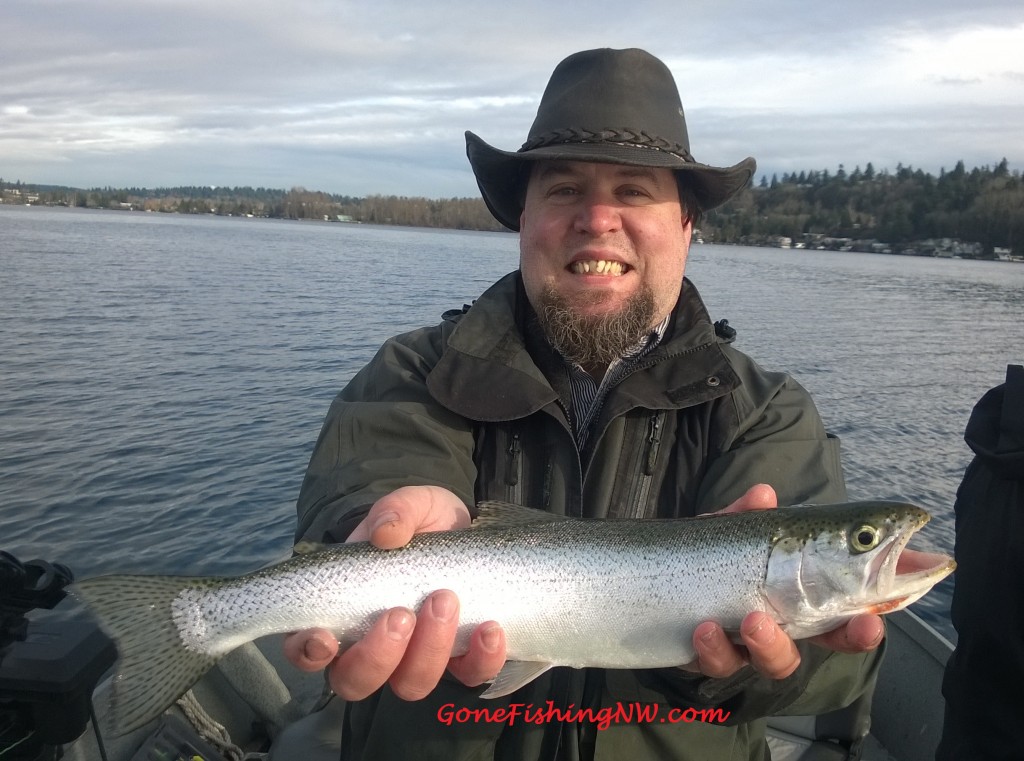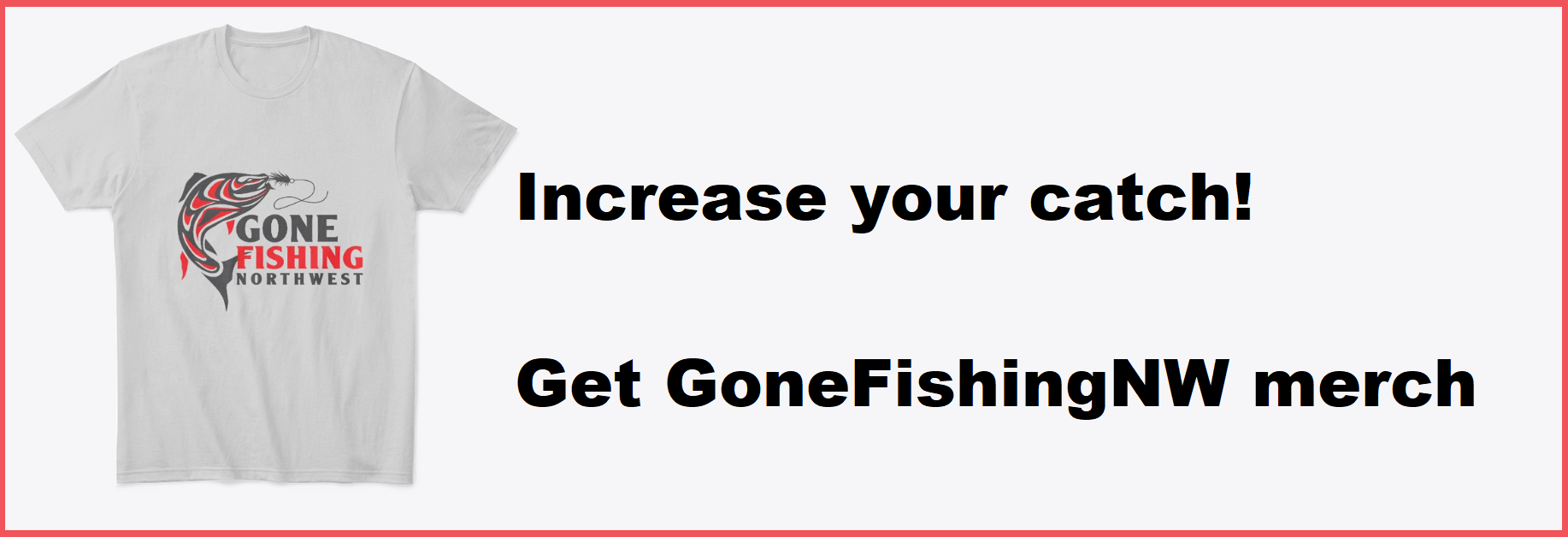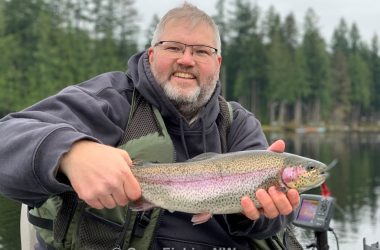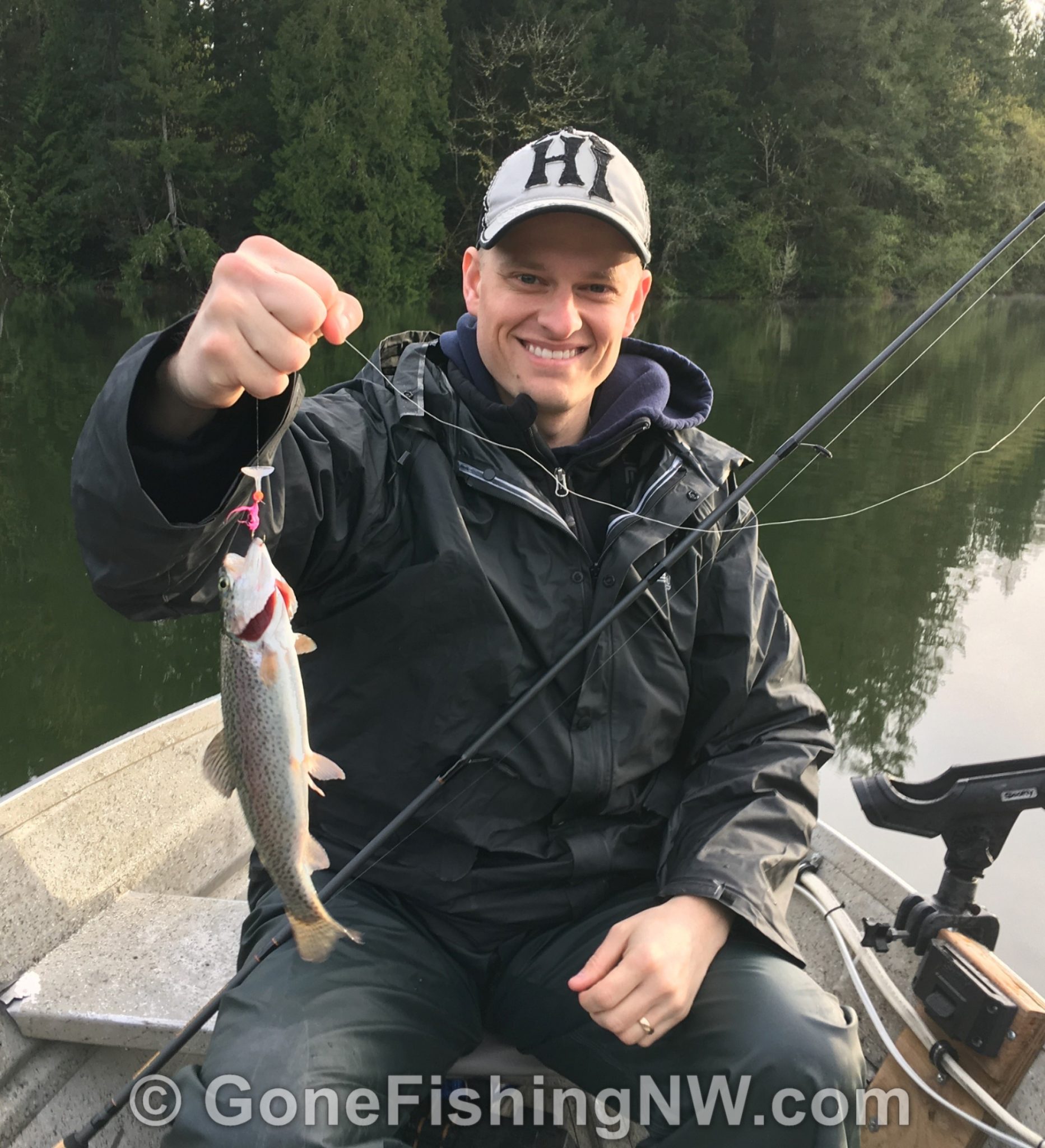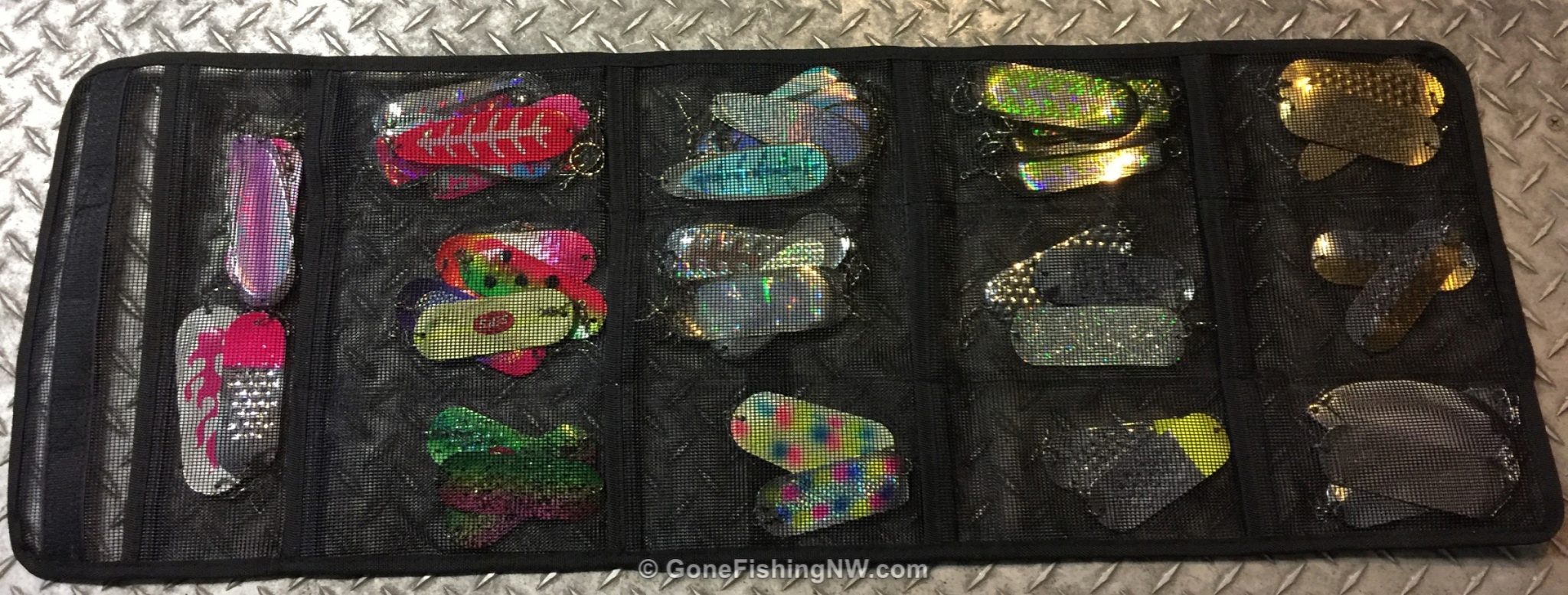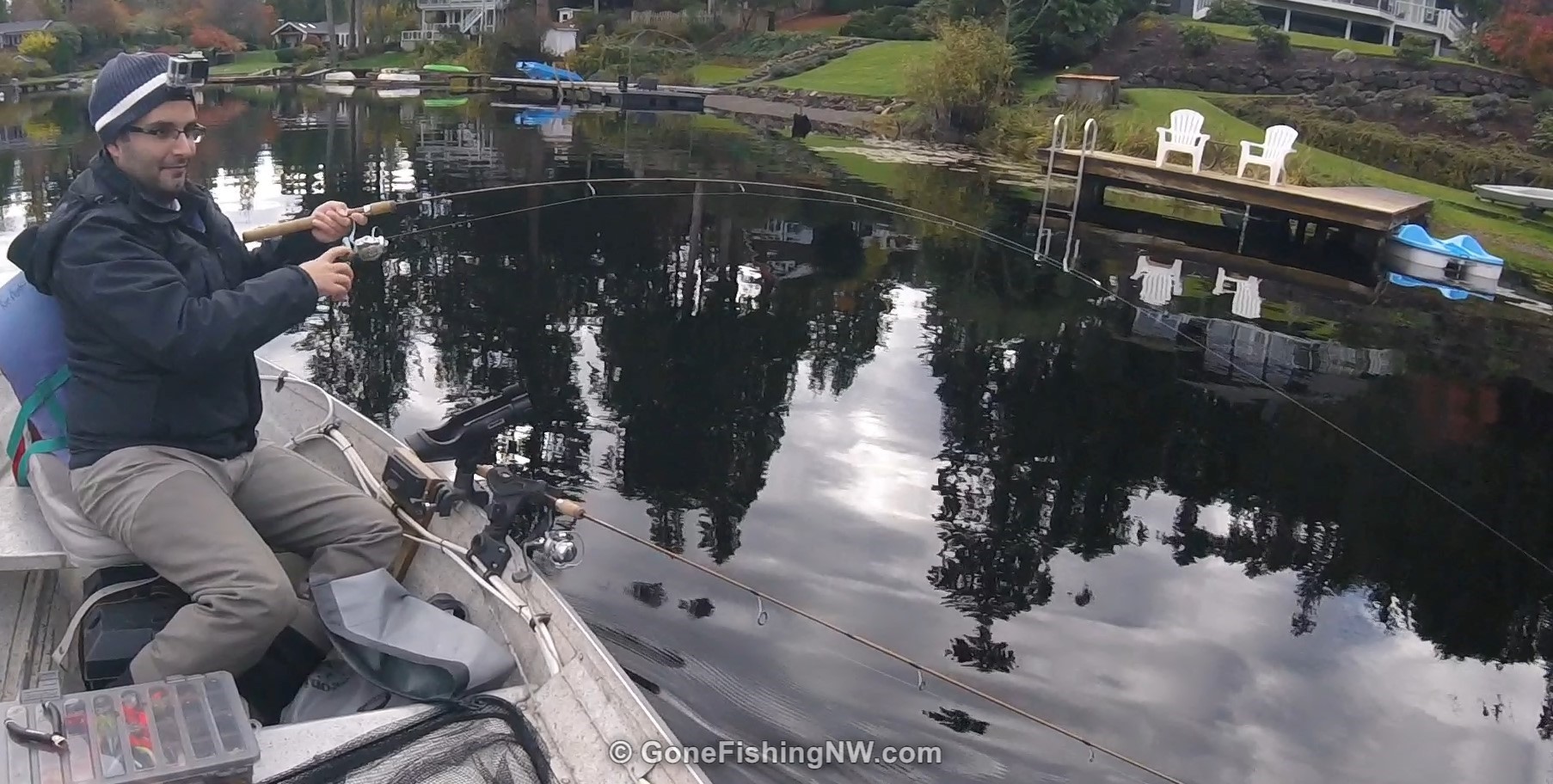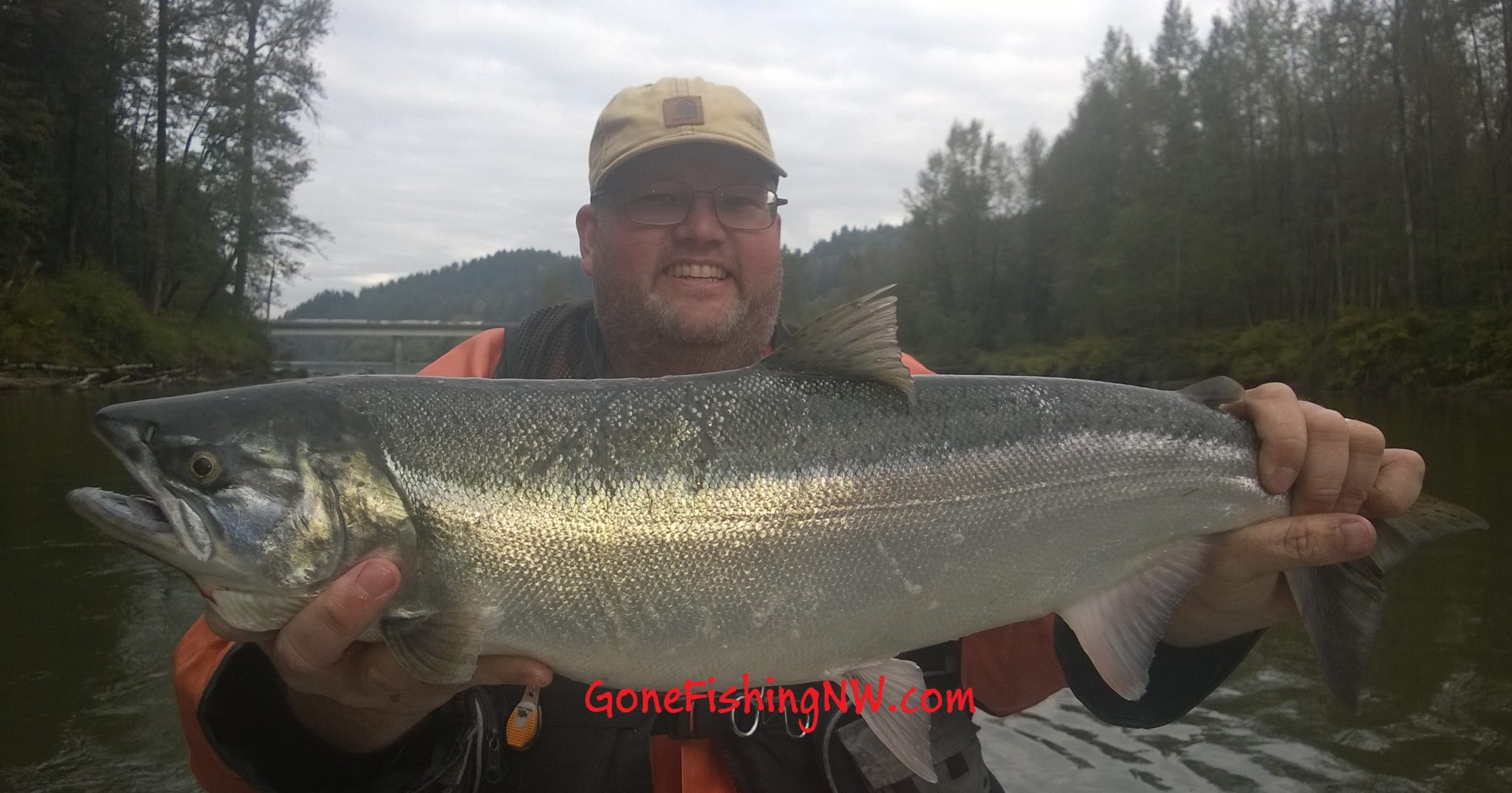As I write this I hear the first of the fall rains hitting the roof. Normally this would cause me to make sure my coho river fishing gear is all in order and ready to go. This year, unfortunately, many of my normal fall salmon fishing locations are closed due, in order to protect the low forecasted return of coho.
My plan instead is to get back to trout fishing. Before I got into salmon fishing, I’d fish for trout year round. Fall can be an excellent time for trout – the combination of cooling waters and the need to bulk up for winter can make the fish hungry and aggressive.
The fish will also be, on average, a bit larger than in the spring since they have been growing all year. This makes up for the reduced number of fish in the various lakes.
However if we approach the lakes like we did in summer, then we will not catch as many as we might otherwise.
The most important thing when fishing for trout in the fall is understanding where the fish are at.
We know in spring they were near the surface. However as summer warmed up the water at the surface got too hot for the trout, causing them to follow the thermocline down deeper. With fall’s cooler weather and rain, the water temperature at the surface is beginning to drop.
If you’d like to find out more about the thermocline please read the article on the thermocline and summer fishing.
Early in fall you’ll want to find the thermocline and initially target it. Your fish finder or even dropping a weighted thermometer can help out with that. Each lake varies, but most will have a thermocline 10-20 feet deep at the end of summer. Each week it will get shallower and shallower.
When the water temperature at the surface gets down to the high 60s, then you should be seeing a fair amount of surface action from the trout. This is the time to target the top few feet in the water column.
Fall fish are usually looking for a good sized meal, so you can use larger lures than you might have used in the spring. However you’ll want to stick with duller natural colors, until the water temperature drops down to the mid 50s.
For trolling I like to use a F5 frog colored flatfish. I rig it on a 4 foot leader made with 6 pound fluorocarbon line. Where the leader and mainline meet I’ll add enough split shot to get the lure down to the desired depth. With the boat in motion I’ll then let out about 75 feet of line, before putting the rod in the holder. With this setup it is best to maintain a speed between 1.0 and 1.2 MPH. You can add scent to the lure if you want, but is usually unneeded.

If you like using bait then I’d recommend a similar setup, but instead of the flatfish I’ll use a wedding ring lure. Red and greens can be great colors to use. I’ll then tip the hook with about a half inch section of nightcrawler, or a bit of powerbait.
If you are into fly fishing, then an intermediate line can work great. A size 6 wooly bugger or carey special is a great place to start – especially in olive or black colors. Make sure to give the fly time to sink to the proper depth. Denny Rickards book Stillwater Presentation is a great resource I highly recommend reading.
When the fish get closer to the surface sometimes I like to switch things up and cast and retrieve spinners. The Mepps Aglia spinner is a classic. Cast it out, and give it some time to sink to the desired depth. Then reel back fast enough to cause that spinner blade to spin. I’ll often cast it in a fan pattern, working from one side to the other. If no fish hit, then I’ll reposition the boat or move down the shore line and try again. Once you find fish beat them up until they stop biting, then get on the move again.
For those who enjoy still fishing, you can stick with the trusty egg weight and powerbait setup. Use a larger lump of powerbait than you might normally would, and ensure your leader is long enough to catch those fish that are now shallower. If you are seeing surface activity, then consider switching to a float and worm setup. You’ll find that targeting fish a few feet deep will work better than trying to get up from the bottom.
One thing I often see in the spring is people fishing on shore casting as far as they can towards the middle of the lake. Often times the fish will cruise along the shoreline for the food which can be found in the shallows, so those Olympic quality casts likely went right past the fish. Start closer to shore, and then work your way out if you aren’t having success.
As long as the water is above mid 50s the best time to fish will be in mornings and evenings, or during overcast days. However once the water temperature drops below that, then fishing on warmer days – particular if we’d have stable weather for several days – will be better.
Make sure to keep an eye on the WDFW trout plant page. Some lakes get fish planted in the fall, as well as the spring. Those lakes can be great places to for the fall fisherman.
For more information on fishing for trout, please check out the trout section of GoneFishingNW.com

